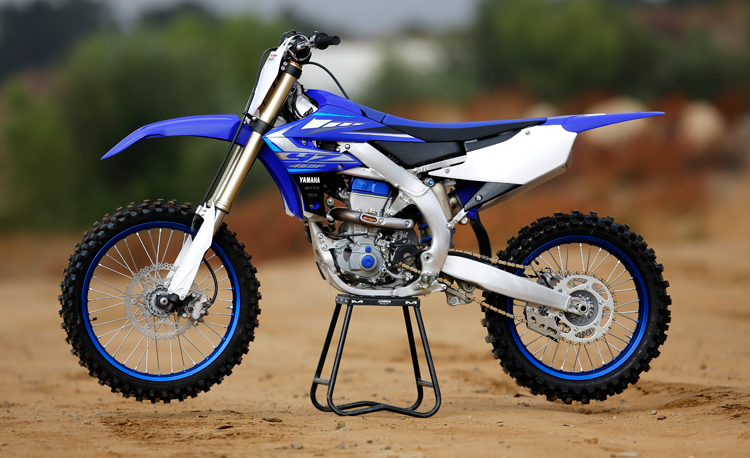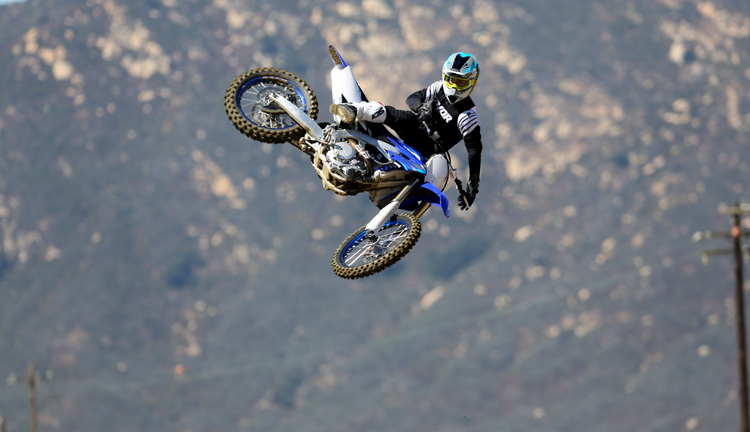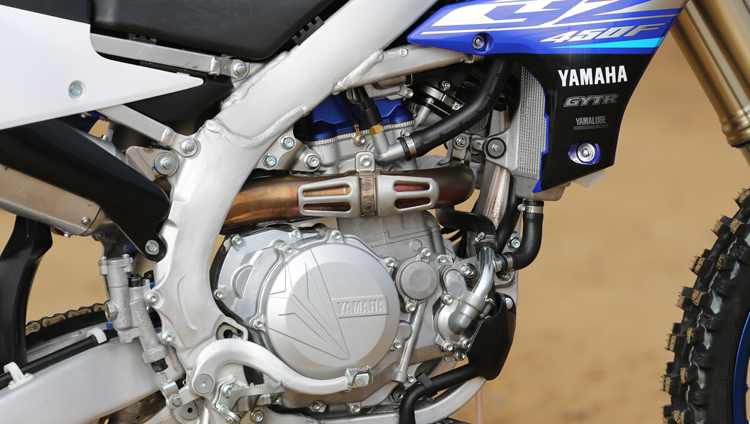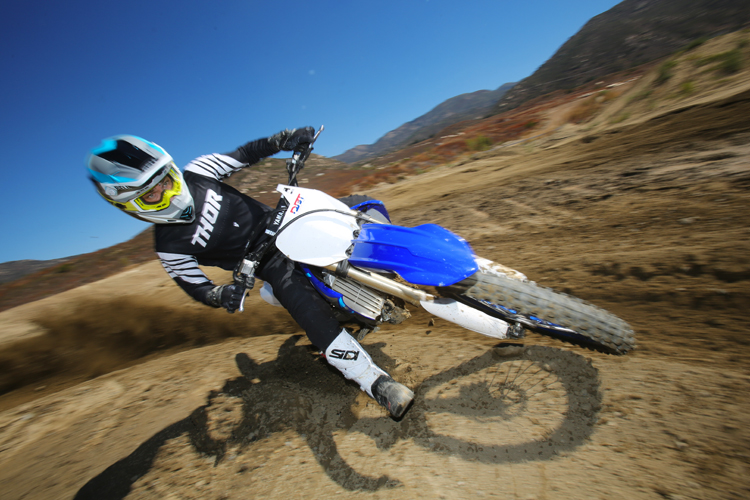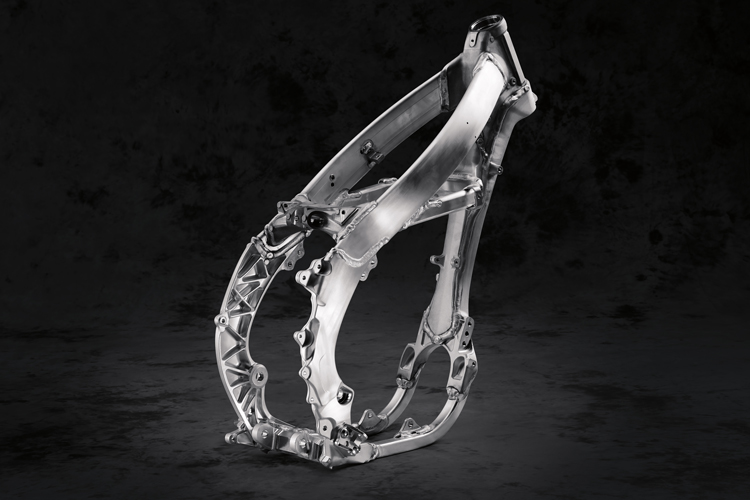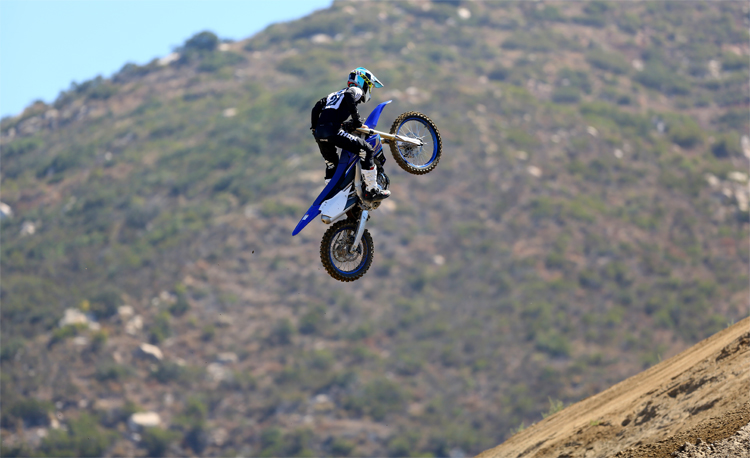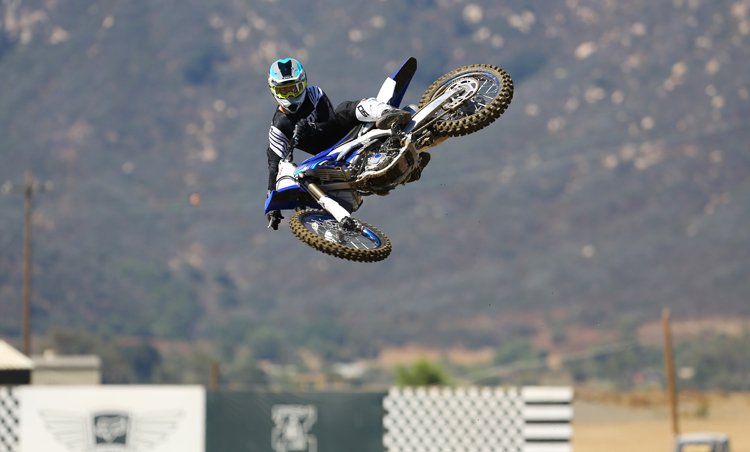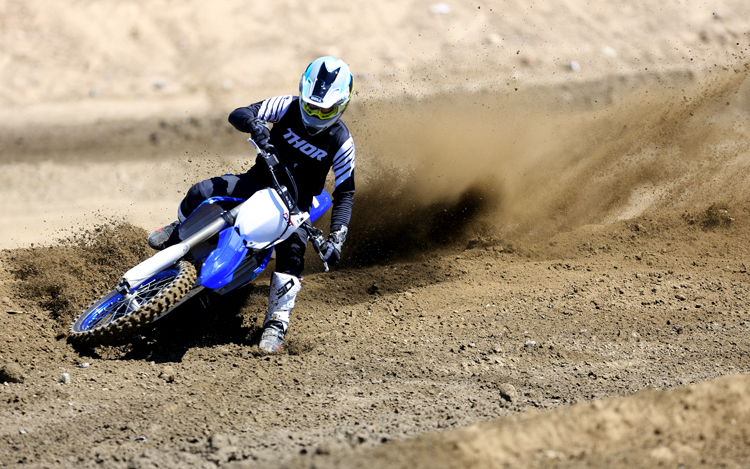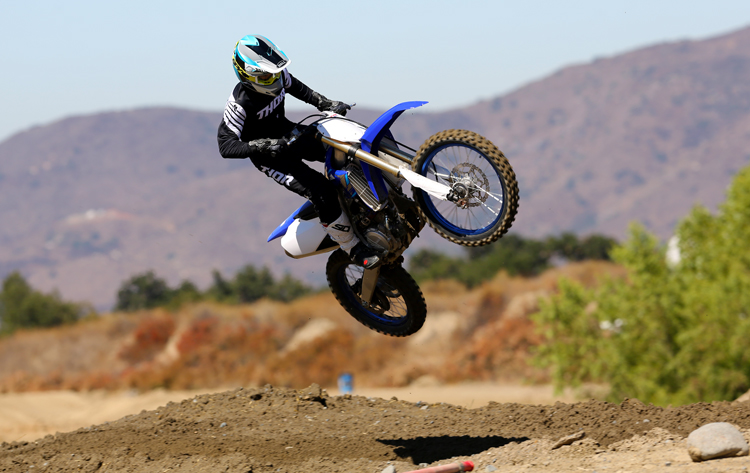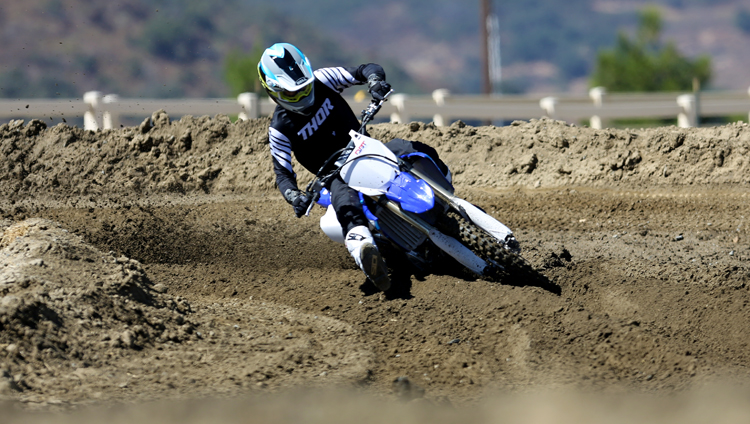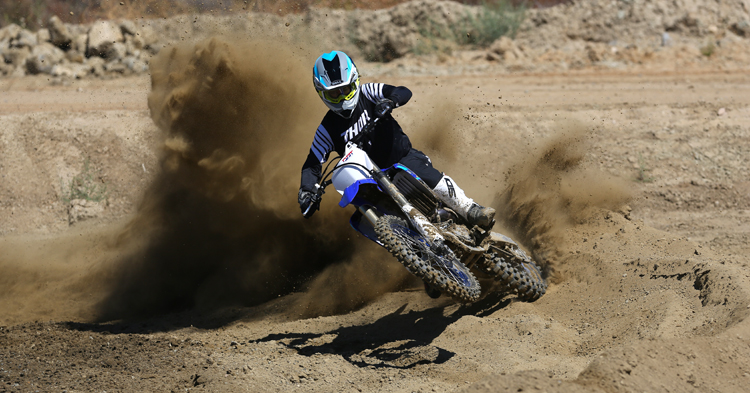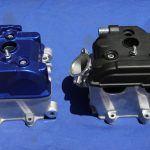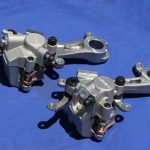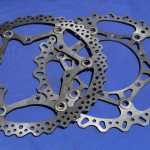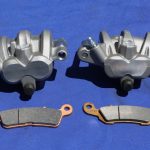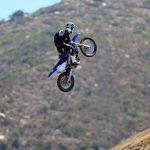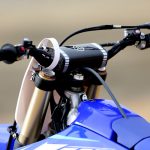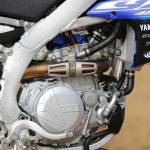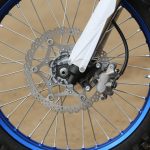2020 Yamaha YZ450F: First Ride test
Looks Are Deceiving!!
By Scott Hoffman (photos and Text) and Dustin Hoffman
To the layman, gazing upon the 2020 Yamadog YZ450F it looks no different than the 2018 or 2019. And some might even mistake it for a 250F from afar. Yes, its looks can be deceiving, yet this new dog is very much new both on and off the track.
Even though a 2019 YZ450F with no changes may have fit the bill for 2020, since most of its competition offer minor changes or updates for the coming year, Yamaha didn’t care, they were all in. You have to remember, motorcycles, especially those from Japan, take years to create from design, development, testing, and finally production. The changes to the 2020 were already pretty much done except for some final suspension or maybe ECU settings nearly a year in advance. Even though Yamaha did not have to make major changes to their bike to be competitive, this ball was already rolling long ago and so far it’s a strike.
Engine Changes:
Although the cases are the same, nearly all of its guts have been revised. The most noticeable is the lowered head design, 14mm at the top of the valve cover and the cams are 6mm lower. Travis Preston mentioned that toward the end of testing they figured the frame was the main reason for the handling improvements but they ended up putting a pre-production 2020 engine in a 2019 chassis and realized the 6mm lower spinning cams and gears and chain made a big difference as well.
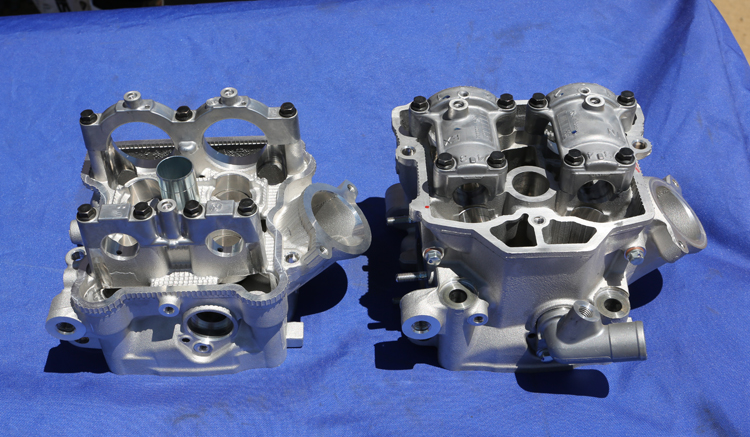
The cams are 14mm closer together and valve stem length has also been reduced 6mm. Intake and exhaust port shape have been altered as well as a newer high-compression piston (12.8 to 13.0:1). The spark plug is now pushed 4.9mm further into the head and the piston ring tension slightly increased to take the compression.
Down below, the connection rod is 1.5mm longer to reduce side loads during the piston stroke. The transmission has also been revised with a wider shift fork groove and gear dog height increased. Other engine mods include head pipe diameter, new air filter, condenser, and the rectifier/regulator is now a one-piece unit, and the ECU has new settings. The ECU also offers a two-way programmable map switch via the handlebar and can be switched on the fly while riding, no need to stop.
Chassis Changes:
The chassis geometry and pickup points remain the same but the main frame spar thickness has been reduced by 0.5mm, while lower cradle tube thickness has been increased by 0.5mm. From there the engine mounts are all new. The top mount has gone from aluminum to steel and the lower, steel to aluminum. To further alter the feel of the chassis, Yamaha put more flex into the top triple clamp and also reduced the front axle inner diameter by 1.4mm or 20% less rigidity.
Suspension Updates:
Because the chassis offers more compliances and flex, Yamaha firmed up the compression and rebound settings. More than just valving, there are smaller oil passages to help increase damping forces in the mid-to-end of the stroke without making the fork and shock harsher and sacrificing small bump compliance.
New Brakes:
Braking has been a hot topic over the last few years and Yamaha’s possible answer is a new caliper with larger pistons and more surface area on the brake pads and front rotor. In the rear, the caliper hanger is lighter by a quarter pound and disk size has been reduced by 5mm.
Other New Stuff:
Although this is part of the chassis, the front handlebar position has been lowered by 5mm and the bar mount position now comes standard in the forward position (2018-2019 in the rear position). The bar mount can still be adjusted four ways, up to 26.5mm rearward and 10mm forward if needed. The seat foam is 10 percent firmer and the under section of the foot pegs is more dished out to reduce catching in corners. Tires have been updated to the Dunlop MX33 from MX3S. Although the overall motorcycle is claimed to be 1lb lighter, the MX33 set are heavier so the total reduction in weight compared to the 2019 could be close to 2lbs if they both were running the same tire.
Yamaha is still the only manufacturer to offer a smartphone app and we still think this is the most innovative piece of technology since the monoshock. Most current YZ-F owners do not take full advantage of this app and how much it offers in the way of performance tuning and overall bike management. No matter how drastic you alter your mapping, you can not hurt or damage the engine, it’s designed this way.
Skip To The Good Stuff: First Ride Test
First off, both of our test riders rode a stock 2019 (all stock settings) back to back with the 2020. Remember, the 2019 YZ450F was the go-to bike during our 2019 450 shootout and the easiest to adapt to in stock trim.
The 2020 does feel like a Yamaha but it’s a different motorcycle for sure. However, it did not take long to realize that the awesome 2019 started to feel a little dated compared to the new 2020. Yes we said that.
The Engine is not as explosive in the mid as the 2019 but puts more power to the ground and is more tractable yet still very much alive. The power curve feels a lot longer and builds power all across the board and pulls further up top. The 2020 is faster and you can feel the increased power but never all at once. We didn’t have time to make any real power tuner changes except Yamaha had one of Travis Preston’s maps built into the second handlebar switch. Our pro test rider actually liked the stock setting best and was enamored with the new power plant. The delivery comes on way low and some of our test riders felt they could grab larger throttle positions in a gear higher while exiting corners, which really made the bike tractable and allowed the new chassis to track really well on exit. After a little time you don’t really miss the harder hitting mid because of the increased connection to the ground and increased pull into the top end. The performance is more manageable but also more aggressive in a way (faster) for our local pro. Our vet rider actually rode the track in totally different gears compared to the 2019, even though the final drive and gears are the same. Because the engine always feels like it’s pulling across the rpm range, it’s easily possible to run a gear higher on most sections of the track. The 20’s power delivery is improved and very much refined and easier to ride overall. The novelty is, if you want to alter its delivery, just grab your phone and program away, the 2020 has plenty of performance to play with, (we never felt the need to make any changes). This is a very, very good engine right from the showroom floor, no complaints.
Yamaha did a great job updating and narrowing the chassis starting in 2018 so there was no real reason to create a complete new chassis for 2020. The 2019 is a very forgiving chassis and plush for the masses. Some were drawn to this feel because of the plush suspension and sometimes Cadillac feel. Yet some pros felt that when pushed, the bike can wallow around a tad. Finding the difference between flex and performance is a fine line. The new Yamaha chassis actually put more flex into the main spars, and is stiffer in the lower cradle and new motor mounts. So what does this all mean? In our book it meant improvement on the track. First off, combined with the new engine, the overall chassis feels way lighter on the track, it’s more alive, suspension is still plush but with less pitch front to back overall. Our pro test rider commented that the 2020 chassis felt like a 250F when compared directly back to back with the 2019 YZ450F.
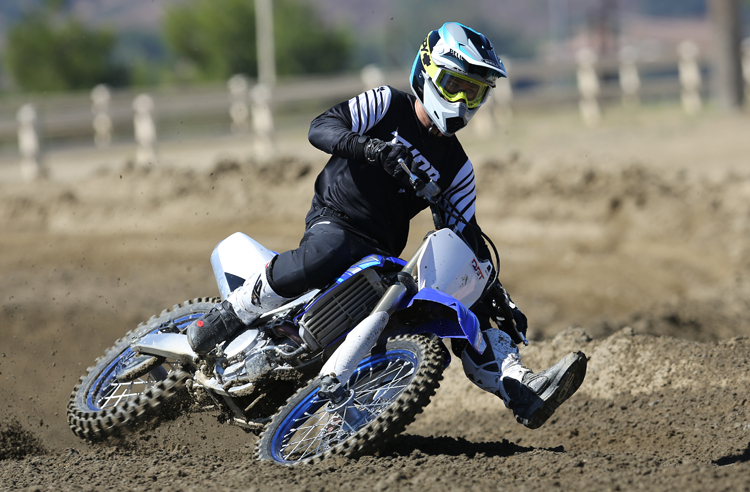
The combined changes really allow the new YZ to feel lighter, almost more aggressive feeling while still retaining that YZ comfort. The chassis drops into corners with less effort and we felt the power delivery really improved how the chassis tracks while exiting corners. The suspension settings, chassis flex, and power to the ground feels so connected and accelerates through nasty bumps effortlessly and is probably the best we have experienced in a stock 450F chassis to date. You can for sure feel the suspension riding higher in the stroke and with less pitch and yaw. Even our plus-200 Clydesdale vet could feel the difference and was able to ride the stock ’20 with just maxed-out spring preload. Bottoming resistance is still amazing and the ’20 felt like it actually soaked up the chop late in the day at Fox Raceway better than the softer dampened 2019. It still has that Yamaha feel but just a more improved version, everything in the right direction.
The lower and forward bar position is actually an improvement to the overall feel of the chassis while the 2019 felt like the bar was too high. The seat is a little firmer but our 6’1″ vet with bad knees still felt the seat-to-peg position is a little tight. Yamaha actually had a GYTR taller seat which does help if you feel even slightly cramped.
What We Think:
Having only one day on the bike is not ideal for testing, yet even with limited seat time it was not difficult come to the conclusion that the 2020 YZ450F is a much-improved motorcycle. The engine is tractable, ridable, and puts the power to the ground. The chassis is lighter feeling, more flickable, drops into corners, and wallows less on the track. Suspension settings are improved and the brakes are a step above compared to older units. The kicker is, both test riders were able to jump onto the ’20 and except for a slight fork clicker adjustment, never made any adjustments all day. The 2019 YZ450 for most is still an amazing motorcycle and if you own one, don’t ride a 2020 because you might be putting that ’19 up for sale very soon. Look for a video of this bike and a more intense test down the road.
Support DBT, Shop and search for products through the link below:
